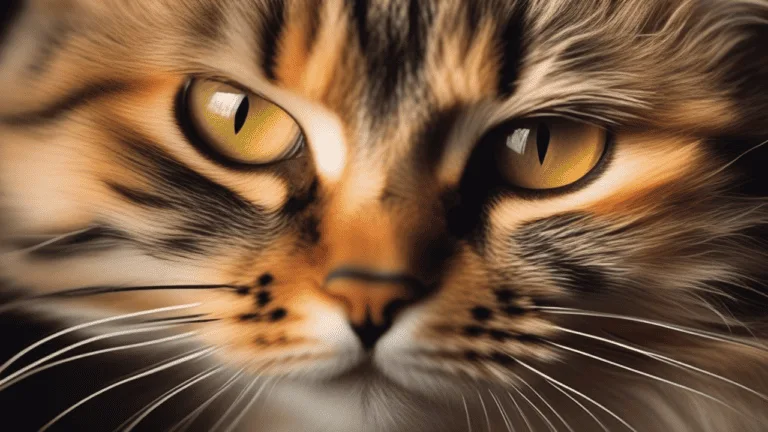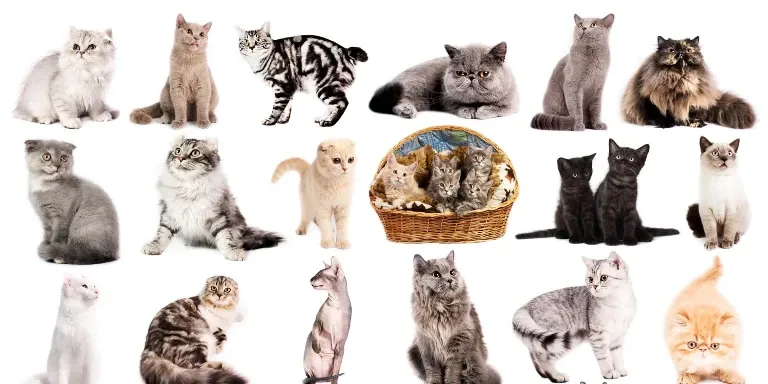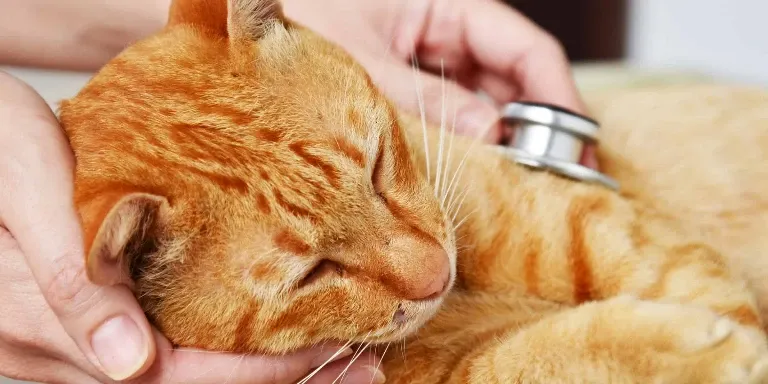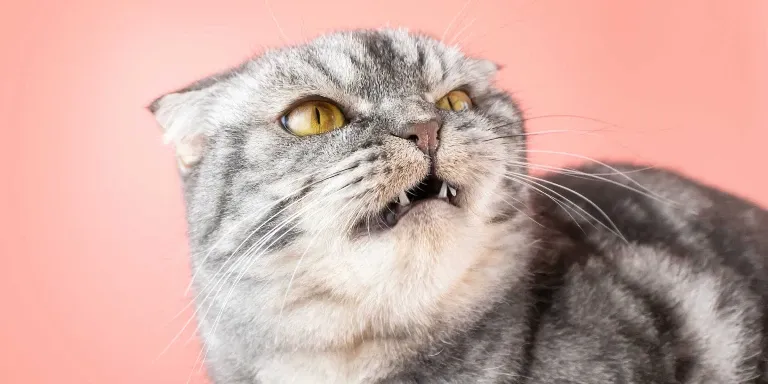The Best Fluffy Pancakes recipe you will fall in love with. Full of tips and tricks to help you make the best pancakes.
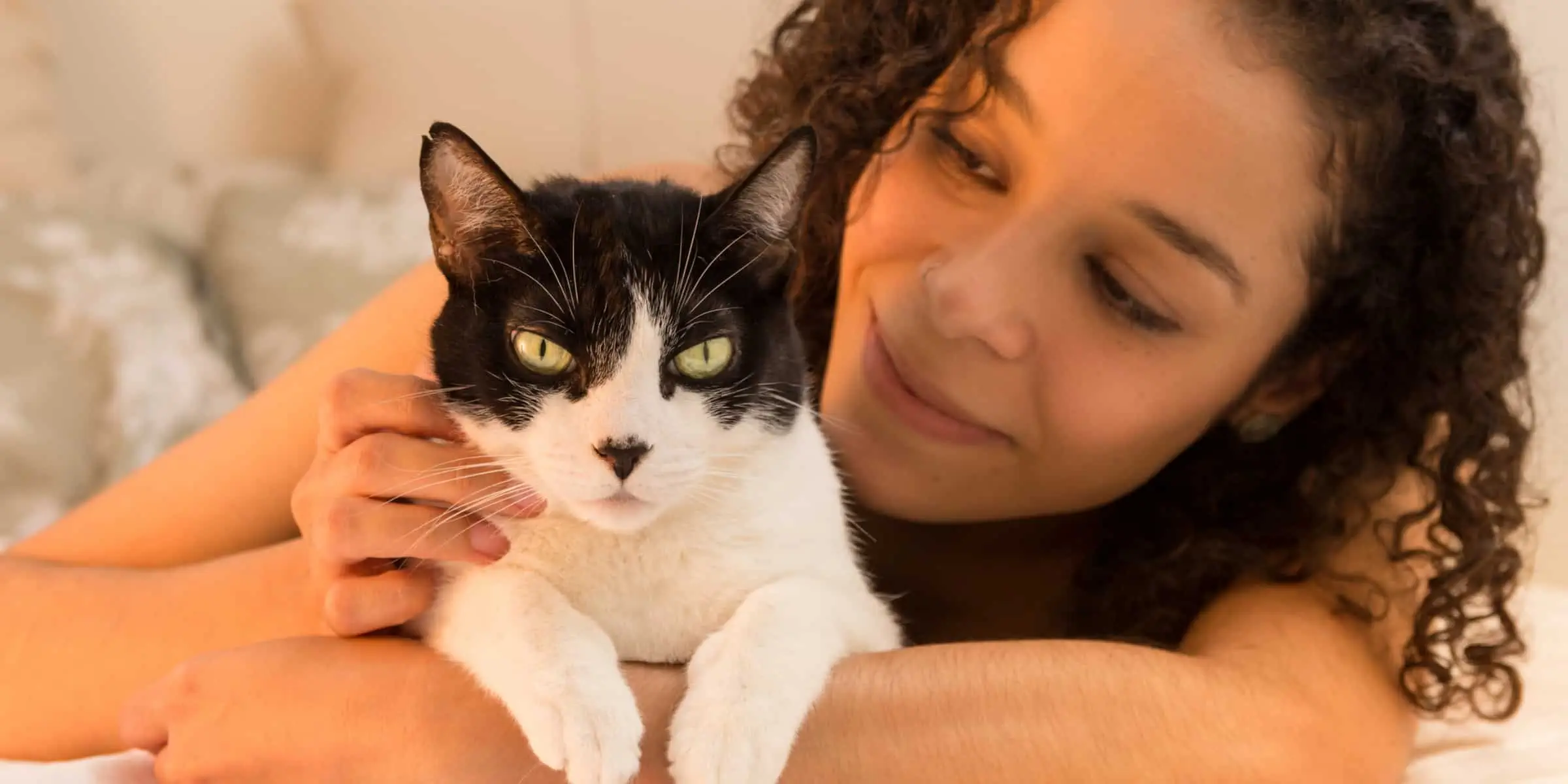
Are you curious about your cat’s ancestry? Maybe you adopted a cat from a shelter and are unsure of their breed. Understanding your cat’s breed can help you better understand their behavior and health needs. Mixed breed cats can have a unique combination of physical and behavioral characteristics that make them one-of-a-kind.
Identifying mixed breed cats can be challenging as they can have a wide variety of traits and appearances. Some common signs of a mixed breed cat include unique coat patterns or colors, unusual body shapes or sizes, and a combination of characteristics from different breeds. However, the only way to accurately determine a cat’s breed or mix is through DNA testing.
In this article, you will learn how to identify mixed breed cats and the common characteristics of different breeds. When it comes to identifying mixed breed cats, it can be challenging to determine their ancestry without genetic testing. However, there are physical and behavioral characteristics that can give you a clue about their breed.
Understanding your cat’s breed can help you provide the best care possible, from their diet to their exercise needs. This article will cover the common physical and behavioral characteristics of mixed breed cats and how to identify your cat’s ancestry. With this information, you can better understand your furry friend and provide them with the best life possible.
Understanding Mixed Breed Cats
You’re probably wondering what makes mixed breed cats so unique and special! Well, mixed breed cats are simply felines that have a genetic makeup that comes from two or more breeds.
Unlike purebred cats, mixed breed cats are not bred for specific traits or characteristics. Instead, they are the result of natural breeding habits. Breeding habits refer to the behavior of cats in the wild, where they mate with multiple partners, and their offspring inherit traits from both parents.
This is what makes mixed breed cats so unique, as they have a combination of traits from different breeds. To understand the genetic makeup of a mixed breed cat, genetic testing can be done. This involves analyzing DNA samples to determine the different breeds that make up the cat’s genetic composition.
Genetic testing is often used to identify potential health issues in mixed breed cats, as certain breeds are more prone to certain health problems. It can also help determine the cat’s temperament and personality traits. However, it’s important to remember that mixed breed cats are individuals and may not exhibit all of the traits associated with their genetic makeup.
Nonetheless, understanding the breeding habits and genetic makeup of mixed breed cats can help you appreciate their unique qualities and provide them with the care they need to thrive.
Physical Characteristics
If you have a cat with fur as fluffy as a cloud and eyes as bright as the sun, chances are they have a mix of different breeds in their genes. Identifying mixed breed cats can be tricky, but physical characteristics can give you a clue.
Coat variations and eye colors are two features that can help you determine whether your cat is a mix of different breeds. One way to identify a mixed breed cat is by looking at their coat. Mixed breed cats can have a variety of coat patterns and textures, such as tabby stripes, solid colors, or even spots. Some mixed breed cats also have unique coat variations like calico or tortoiseshell, which can indicate a mix of different breeds.
Keep in mind that coat variations can also occur in purebred cats, so it’s best to confirm your cat’s breed through DNA testing. Another physical characteristic to look for when identifying mixed breed cats is eye color. While most cats have green or yellow eyes, mixed breed cats can have a wide range of eye colors, including blue, gold, and even odd-eyed (one eye is a different color than the other).
Eye color can also be influenced by breed, so if your cat has a unique eye color, it may be a sign that they have a mix of different breeds in their genes. Identifying mixed breed cats can be challenging, but physical characteristics like coat variations and eye colors can give you a clue about their breed.
Keep in mind that these traits can also occur in purebred cats, so it’s best to confirm your cat’s breed through DNA testing if you’re unsure. Regardless of their breed, mixed breed cats make wonderful pets and are loved for their unique personalities and traits.
Behavioral Characteristics
When observing a cat’s behavior, we can see their playful side as they chase after toys or their independent nature as they roam around the house. However, these aren’t the only behavioral characteristics that can help identify a mixed breed cat.
Other traits related to training and socialization can also give clues about a cat’s heritage. Training methods are one way to distinguish a mixed breed cat. Different breeds may respond better to certain training methods, which can be reflected in their behavior.
For example, some breeds may be more receptive to positive reinforcement training, while others may require a more assertive approach. Observing a cat’s response to training can help identify any potential breed influences.
Socialization techniques can also provide insight into a cat’s background. Kittens that are exposed to a variety of people and experiences during their critical socialization period are more likely to develop into well-adjusted cats.
However, if a cat is timid or fearful around new people or situations, it may indicate a lack of proper socialization during this crucial time. Understanding a cat’s socialization history can provide clues about their breed makeup.
A cat’s behavior can reveal important information about their breed heritage. Observing their response to training methods and socialization techniques can provide valuable insight into their background. By understanding these behavioral characteristics, cat owners can better care for their furry friends and provide them with the appropriate care and attention they need to thrive.
Differences Between Mixed Breeds
It’s interesting to note how various characteristics can differ between different types of cats that come from mixed backgrounds. This is because mixed breed cats are a mixture of two or more breeds, and each breed has its own unique physical and behavioral traits.
Some mixed breed cats may have a more dominant breed in their genetic makeup, while others may have a more even mix of different breeds. To identify the breeds that make up a mixed breed cat, you can use genetic testing or breed identification tools.
Genetic testing involves analyzing the cat’s DNA to determine its genetic makeup and the breeds that contributed to its genetic composition. This method is highly accurate but can be quite expensive. Alternatively, breed identification tools use physical characteristics and behavioral traits to determine the cat’s breed. However, these tools may not be as accurate as genetic testing.
Differences between mixed breeds can also be seen in their physical appearance and temperament. Some mixed breed cats may have longer or shorter hair, different colors and patterns, or unique facial features. In terms of temperament, some mixed breed cats may be more active and playful, while others may be more independent and reserved.
Understanding these differences can help you provide the best care for your mixed breed cat and ensure that they live a happy and healthy life.
Identifying Your Cat’s Ancestry
To pinpoint your feline’s ancestry, genetic testing or breed identification tools can be utilized to determine its genetic composition and unique physical and behavioral traits.
Genetic testing involves taking a DNA sample from your cat and analyzing it to determine its genetic makeup. This information can help you identify the breeds that make up your cat’s ancestry and understand the breed-specific traits that your cat may exhibit.
When it comes to breed specific traits, there are a number of physical and behavioral characteristics that are associated with different breeds. For example, Siamese cats are known for being vocal and active, while Persian cats are known for their calm and affectionate temperament.
By identifying your cat’s ancestry, you can better understand its unique personality and behavior, and provide the appropriate care and attention it needs. In addition to genetic testing, there are also breed identification tools that can help you determine your cat’s breed.
These tools use physical characteristics such as coat color, pattern, and eye shape to identify the breed or breeds that may be present in your cat’s ancestry. By utilizing these tools, you can gain a better understanding of your cat’s history and provide it with the best possible care.
Common Mixed Breeds
If you’ve ever adopted a furry friend without knowing their background, chances are they might be a delightful mixture of various feline breeds.
When it comes to identifying mixed breed cats, tabby mixes are among the most common. These cats are usually identified by their distinctive ‘M’ marking on their foreheads and stripes on their coats. They come in different colors, including brown, gray, and orange.
Another type of mixed breed cat that you might encounter is the Siamese mix. These cats are known for their striking blue eyes and distinct vocalizations. They’re also recognized by their sleek and slender build, as well as their short fur coat. Siamese mixes come in various colors, including white, cream, and brown.
It’s important to remember that mixed breed cats can have different characteristics, depending on the breeds that they’re mixed with. Identifying them can be a fun challenge, but it’s also essential to understand their needs and personalities. By knowing their ancestry, you can provide them with the proper care and affection they need to thrive and become part of your family.
Adopting a Mixed Breed Cat
If you’re considering adopting a mixed breed cat, there are many benefits to doing so. They’re not only unique and special in their own way, but they also tend to have fewer health problems than purebreds.
To find the perfect mixed breed cat for you, start by checking with local animal shelters and rescue organizations.
Benefits of Adopting
Imagine finding a treasure chest full of love and loyalty – that’s exactly what you’ll get when you adopt a mixed breed cat. Apart from the satisfaction of giving a home to a cat in need, there are several other benefits of adopting a mixed breed cat.
For starters, mixed breed cats are often healthier than purebred cats as they have a wider gene pool. They’re less prone to genetic disorders and are generally more resilient due to their diverse genetic makeup.
Another reason to consider adopting a mixed breed cat is that they’re unique in their appearance and personality. With mixed breed cats, you never know what you’re going to get – they can come in all shapes, sizes, and colors, and each cat has its own unique personality.
This means that you can find a cat that perfectly suits your lifestyle and temperament. Plus, mixed breed cats tend to be more adaptable than purebred cats, making them perfect for households with children, other pets, or a busy lifestyle.
So, if you’re thinking of adopting a cat, consider giving a mixed breed cat a chance – you won’t regret it!
Finding a Mixed Breed Cat
Now that you know the benefits of adopting a mixed breed cat, you may be wondering how to find one.
One of the best options is to visit your local animal shelters. These shelters often have a variety of mixed breed cats available for adoption, and the staff can help you find one that fits your lifestyle and personality. Additionally, adopting from a shelter can provide you with a sense of satisfaction, knowing that you’re giving a loving home to a cat in need.
If you’re interested in finding out more about the genetic makeup of your mixed breed cat, you can also consider genetic testing.
This can help you identify the breeds that make up your cat, and give you insight into their personality traits and potential health issues. There are several companies that offer genetic testing for cats, and many of them can be done from the comfort of your own home with a simple cheek swab.
Keep in mind that genetic testing isn’t necessary, but it can be a fun and informative way to learn more about your furry friend.
Can I Identify the Breed of a Mixed Breed Cat Based on Their Physical Features?
Identifying mixed cat breeds can be challenging due to their diverse genetic makeup. Physical features like ear shape, fur pattern, and eye color may provide clues, but ultimately, mixed cat breeds count on a combination of characteristics that make it difficult to pinpoint a specific breed.
Final Thoughts
Congratulations! You now have a better understanding of mixed breed cats and how to identify them. By paying attention to their physical and behavioral characteristics, you can start to piece together their ancestry and even learn about their unique traits and tendencies.
Remember, every mixed breed cat is different, and there can be a wide range of differences between breeds. However, by doing some research and consulting with experts, you can get a better idea of what to expect from your cat and how to provide them with the best care possible.
So, go out there and adopt a mixed breed cat today! With their unique personalities and diverse backgrounds, they’re sure to bring joy and excitement into your life. And who knows, maybe you’ll even discover a new favorite breed that you never knew existed before.
Happy cat hunting!

